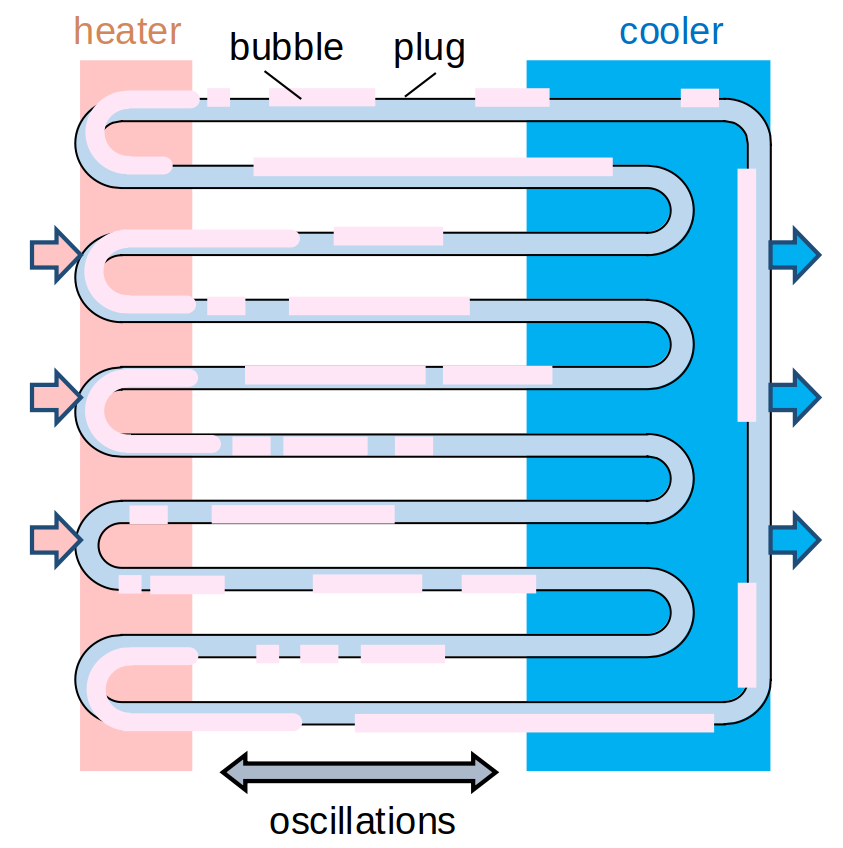OMEN - Oscillation of MENisci in capillaries in microgravity
Laboratories : SPEC, CEA Paris-Saclay

Heat emitted by highly compacted electronic equipment becomes a limiting factor for its performance. If the heat is not conducted outside the device, it can cause the device overheating and, ultimately, its failure. To avoid such unwanted events, passive devices called heat pipes are used. The heat emitted by the circuits of laptops and smartphones is relatively small and can be managed by capillary heat pipes. They are however unsuitable for more powerful electronics onboard the communication satellites.
One can use for this purpose a novel device called pulsating heat pipe (PHP), which is simply a capillary tube that forms a closed loop that meanders between a hot spot to be cooled and a heat radiator. The tube is partially filled by a pure fluid that forms inside vapor bubbles separated by liquid plugs. When the heat power is applied, evaporation and condensation alternate causing oscillation of the whole bubble-plug pattern. The heat amount is efficiently transferred due to both latent and convective heat exchange.
The PHP functioning is not yet understood and is under active study at CEA Paris-Saclay that develops the code CASCO (French abbreviation for Code Avancé de Simulation de Caloduc Oscillant: Advanced PHP simulation code). CASCO is at the same time a research instrument that allows us to look inside the PHP and a design tool for the industry. CEA participates also in the ESA Space PHP project. Its idea is to enhance the functioning of PHP by increasing the tube diameter to reduce the viscous dissipation above the capillary length limit that distinguishes capillaries (where liquid menisci are created so bubble-plug pattern can exist) and big tubes in which the flow is stratified due to the gravity effect. Two PHP prototypes for the implementation at the ISS in the ESA apparatus Heat Transfer Host 1 is currently under testing by Kayser Italia.
Space tubular PHP concept. The thin bar is a heater. Two large plates are coolers. The thin tube and a valve serve to pump out and fill the PHP.
Related references :
1 For more information on PHP: https://iramis.cea.fr/Pisp/vadim.nikolayev/PHP_CEA.html
